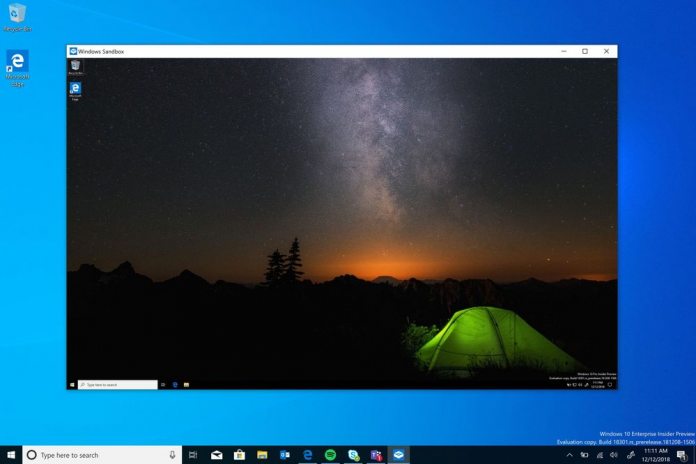That may look like an insignificant change on paper, after-all, performance improvements are typically nameless and unnoticeable. This is different, with users likely to see a more rapid Sandbox after installing this update. It’s all to do with how the Sandbox functions. Announced by Microsoft in 2018 and released in 2019, Windows Sandbox serves as an integrated virtual desktop for Windows 10 Pro and Enterprise users. As the name sandbox suggests, the desktop provides a secure location for users to run a desktop, or as Microsoft says a “lightweight… isolated, temporary, desktop environment.” Windows Sandbox allows users to run software they may believe to be harmful on their PC. Organizations can run these programs without damaging the PC. Among the requirements for running Sandbox are 4GB of RAM, AMD64 architecture, and 1GB of free disk space. If you’re interested in using the Sandbox, our tutorial shows you how to start the feature on Windows 10.
Performance Boost
However, in its current guise, the sandbox’s runtime matches the host platform, which harms performance such as when launching. In the upcoming Windows 10 21H2 Sun Valley update, Microsoft will add a new runtime that delivers improved performance. This runtime will also benefit the company’s other container tools, such as Microsoft Defender Application Guard. Microsoft has configured the runtime to work specifically for container situations, providing a more lightweight Sandbox experience. Users should see noticeable performance gains, especially when running older or limited hardware. The update is currently part of Windows 10 Preview Build 21343, which is a RS_PRERELEASE preview on the Dev channel of the Windows Insider Program. It won’t come to all Windows 10 users until this fall when version 21H2 ships. Tip of the day: Whether you’re planning an upgrade, tuning CPU timings, or just curious, it’s handy to know information about your RAM. In our tutorial, we show you how to check RAM speed, type, and size using several built-in Windows 10 tools.




